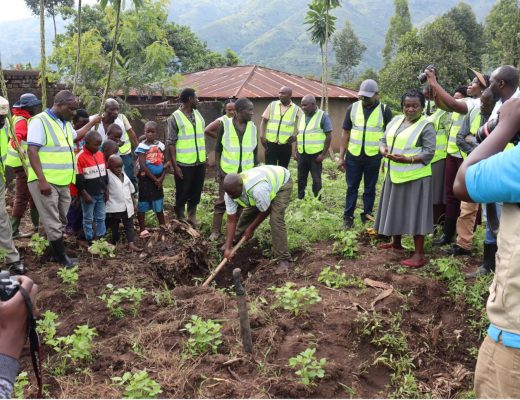While cassava is among the most important crops in the isle of Zanzibar, Tanzania, where it is ranked second to rice, the residents consume it in very limited and not so exciting ways. It is boiled or fried with oil and eaten as a snack /breakfast or stewed in coconut milk for lunch or dinner. This in turn limits the demand and market for the crop.
The Support to Agricultural Research for Development of Strategic Crops in Africa (SARD-SC) project which is promoting the production of the crop is also working on diversifying the methods of cooking and consuming cassava, introducing more exciting recipes.
Recently, the project in collaboration with one of its partner in the isle, Zanzibar Agricultural Research Institute (ZARI), held training for farmers, processors and traders on preparing additional food recipes using cassava. These included making cakes, bans, spicy porridge and chin chin – a snack made of fried stringy cassava (sort of like fried cassava spaghetti). These were made from high quality cassava flour (HQCF) – on its own or mixed with wheat flour. They also made chicken cassava pilau in which peeled cassava that’s cut into little pieces substituted rice in this popular dish.
The SARD-SC project seeks to increase food security and improve the income and living standards of small-holder farmers in 20 African countries, including Tanzania, by increasing the production of four important staple crops – maize, wheat, cassava and rice. It is funded by the Africa Development Bank (AfDB).
- One of the trainee adds salt to the cassava pilau
- Heating up oil to fry the bans and chin chin
- Very proud of her out put – a delicous looking cassva cake
- A trainer from IITA shows the trainees how to prepare the dough from cassava flour
- Covering the cake with a special cover in a traditional oven.
- Sieving grated coconut that will go into the spicy buns
- Noting down the recipes so to prepare them later at home
- Mixing the dough for the cassava chin chin
- Hard at work making the doughs for the various recipes.
- Frying the buns made of high quality cassava flour blendd with wheat flour
- Golden brown buns nearly done
- Hand mixing of the dough made of cassva and wheat flour blend
- Placing hot charcoal on top of the special cover in the traditional oven to bake the cakes
- The trainers from IITA and ZARI supervising the mixing of the doughs for various recipes.
- Reading the cassava recipes handed out




















No Comments